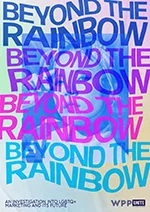 |
| Andrew Isen |
Corporate responses to the COVID-19 pandemic—along with long-anticipated access to the vaccine increasing daily—will be seen as a turning point in our culture and economy. Like other turning points, proactive companies need to acknowledge the challenges of adapting traditional approaches to consumer outreach, identifying niche consumer segments that will rebound quickly, sustain brand relevancy, maintain loyalty and increase sales.
One consumer segment will come out first, literally, and stronger than ever: the $1 trillion LGBTQ consumer engine. How do I know? This community has done this before. For more than 25 years, I have been an active participant in the resiliency and economic power of this audience as it has rebounded from social and societal uncertainties and events. COVID-19 fosters social isolation, economic fear and apprehension. So, too, did HIV/AIDS, 9/11, and the ’08 financial crisis. Having this history of previously being hit hard, coupled with their undisputed buying power, LGBTQ consumers are the bellwether for corporate marketers.
Each time the LGBTQ consumer has been the first to come out. The first to return to brick and mortar business, the first to return to social settings and the first to embrace marketing messages that are tailored to their lexicon and purchasing habits. Consider the sheer size of the market. Recent surveys show that nearly 20 percent of Millennials aged 25-34 identify as LGBTQ, a seismic increase in this coveted age demographic.
LGBTQ consumers are highly enthusiastic, early-adopting influencers, who represent a disproportionate control over a brand’s bottom line. While not homogenous or monolithic, this core consumer group is highly responsive to marketing messages as they evaluate purchasing a product or service. Over 92 percent of LGBTQ consumers ages 18-34 respond that they seek recommendations from a trusted source (business2community.com). Therefore, a company’s choice of relatable influencers becomes key to opening doors of opportunities.
While the strong LGBTQ socioeconomic data is important, so too are qualitative considerations. Research shows that "positive image reinforcement" leads to positive purchasing decisions. Fully 78 percent of these consumers affirmatively state that they would actively support products and services that market to them directly. Further, people who identify as members of minority communities respond overwhelmingly to being treated equally, as friends or family, rather than outsiders.
As companies strive to embrace diversity and inclusion, the importance of recognizing racial and ethnic injustices, xenophobia and homophobia becomes critical. Companies that come out to LGBTQ consumers in an approach devoid of stereotype can break through generic messaging. This consumer quickly perceives the difference between pandering and authenticity.
The number of companies and brands embracing these ideals grows daily. From automotive to technology to beverages, savvy companies are putting limited marketing dollars into targeted and effective spends. Budweiser, Walgreens, IBM and Microsoft—to name a few—have all launched campaigns representing the "world around us." Last month, Geico launched a print campaign featuring an affectionate portrayal of a male couple, with a slice-of-life cooking storyboard.
Navigating the current marketplace wrought by COVID-19 is difficult. But, planning for what comes next is essential. Post-pandemic, the LGBTQ consumer segment will be the one to watch for economic growth and recovery.
My experience working with global companies has shown this consumer’s resiliency through unknown challenges, adversity and upheaval. This community has been here before and will be the first to come out again.
***
Andrew Isen is the founder and president of WinMarkconcepts.com, a Washington DC-based agency that has been marketing to the LGBTQ community for over 25 years. He has been named a member of OUT Magazine's “Out 100” and is regularly quoted in national media outlets including the New York Times, the Washington Post, the Los Angeles Times and PBS about trends and marketing best practices in the LGBTQ segment.


 LGBTQ+ representation in communications is getting better, but many brands are still lagging when it comes to making a year-round commitment, according to a report from WPP Unite.
LGBTQ+ representation in communications is getting better, but many brands are still lagging when it comes to making a year-round commitment, according to a report from WPP Unite. To effectively connect with the LGBTQ+ community, agencies need to build cultures that create equity-minded teams and bring that mindset to the work they deliver for clients.
To effectively connect with the LGBTQ+ community, agencies need to build cultures that create equity-minded teams and bring that mindset to the work they deliver for clients.  Being your authentic self might come with some risks, but it can also spur careers and brands to greater success.
Being your authentic self might come with some risks, but it can also spur careers and brands to greater success. An ever-larger number of companies and organizations are using Pride Month to proclaim how LGBTQ-friendly or supportive they are—but how can ethical companies or organizations really show their commitment to meeting the needs and expectations of LGBTQ audiences?
An ever-larger number of companies and organizations are using Pride Month to proclaim how LGBTQ-friendly or supportive they are—but how can ethical companies or organizations really show their commitment to meeting the needs and expectations of LGBTQ audiences? There are ways that we as communicators can work to prevent backsliding on the deeply important issue of LGBTQ+ rights. Here are five of them.
There are ways that we as communicators can work to prevent backsliding on the deeply important issue of LGBTQ+ rights. Here are five of them.


 Have a comment? Send it to
Have a comment? Send it to 
No comments have been submitted for this story yet.